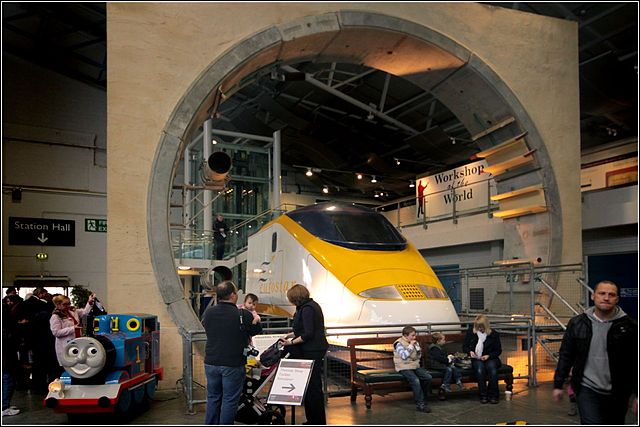 For hundreds of years, Scotland has been known for the ability to produce talented and internationally renowned engineers. Thankfully, it’s also a sector in which we continue to enjoy great success and opportunities today. If you already have a few engineering jobs under your belt, or are on the verge of completing your training or degree, we’ve put together some local inspiration for you. Here’s just some of the greatest Scots to have picked up a pencil or a screwdriver and changed history…
For hundreds of years, Scotland has been known for the ability to produce talented and internationally renowned engineers. Thankfully, it’s also a sector in which we continue to enjoy great success and opportunities today. If you already have a few engineering jobs under your belt, or are on the verge of completing your training or degree, we’ve put together some local inspiration for you. Here’s just some of the greatest Scots to have picked up a pencil or a screwdriver and changed history…
James Watt
When you’ve had the unit used to measure electrical energy named after you then it’s a pretty safe bet that you achieved something of note in your life. Hailing from Greenock, James Watt was responsible for vastly improving the efficiency levels of steam engines. Born in 1736, most of his youth saw the industrial revolution still being driven by the 1698 design of the Newcomen steam engine.
Watt was able to add a separate condensing chamber that resolved the problem of so much steam being lost from the engine. He did this at the age of 28, having originally begun his working life producing mathematical instruments. As well as a world-changing engineer, he’s also a powerful symbol of what can be achieved if you’re prepared to move into a different area of work.
Thomas Telford
If you thought that pun-based nicknames began with the tabloids then think again. Thomas Telford, The man known for his bridges, canals and – of course – roads, was often referred to as The Colossus of Roads! Telford’s path to legendary status is as inspiring as his eventual success. Born in Dumfriesshire, his father died when Telford was only 4 months old and his mother couldn’t afford to raise him so he was brought up by other relatives. The young Telford left school at 14 to become an apprentice stonemason.
These days, what followed would probably be referred to CPD (continuing professional development) Telford studied by night to keep improving his knowledge of construction and improve the opportunities open to him. At the age of 25 he’d made the move to London, having already gained experience of working in Edinburgh. His civil engineering jobs would go on to be groundbreaking and included the Ellesmere canal – which had sections supported on stilts – the Montford Stone bridge over the River Severn and, back home in Scotland, the 60-mile long Caledonian Canal.
Dorothée Pullinger
Like Pilcher, Dorothée Pullinger wasn’t born in Scotland but it had a hugely formative effective on her engineering work. Her father was a manager at Arrol-Johnston, a Scottish automobile company, and in 1910 she began working there as a draftsperson. This was at a time in which attitudes to women working were very different from today.
World War I was to have a strong effect on this, with large numbers of women being employed in munitions factories. Management roles were a different matter, however, so it’s a mark of her achievements that Pullinger became manager of a Vickers munitions plant during the First World War, before also going on to manage an automobile factory. The latter had originally been a munitions plant set up by her father but changed roles after the war to become known as Galloway Motors.
Her involvement with cars wasn’t limited to work either, she became an enthusiast racing car driver and actually won the 1924 Scottish Six-Day Car Trials! During WWII, she was also the only woman to be appointed to the Ministry of Production’s Industrial Panel.
Hugh Gill
Through his work with Touch Bionics, Hugh Gill was instrumental in the development of the i-limb, the world’s first commercially available, fully-articulated hand. When he joined the firm the i-limb was still at the prototype stage, but 15 months later he’d made significant changes to the design and it was ready for launch.
This isn’t the only hugely important project that he’s been a key part of though. He was also responsible for ensuring that the machine used in the drilling of the Channel Tunnel was able to retain its structural integrity, while bearing the pressure caused by the mass of the soil and sea above it. Two fantastic achievements in two such distinct areas make Hugh Gill a modern hero of Scottish engineering.

How can you follow in the footsteps of these great engineers?
Scotland remains are the forefront of world engineering advances and there are opportunities to specialise in a number of different areas. Renewable energy, for example, is an ever-growing sector in the country and a very important one for the future. So if you’d like to make the same kind of impact as the people we’ve mentioned in this article, remember that Scotland is still the place to do it. All of the people we’ve mentioned in this article are members of the Scottish Engineering Hall of Fame… could you join them?
James Watt statue photo by Hajotthu and Channel Tunnel photo by Ben Salter, both used under Wikimedia creative commons licence.


